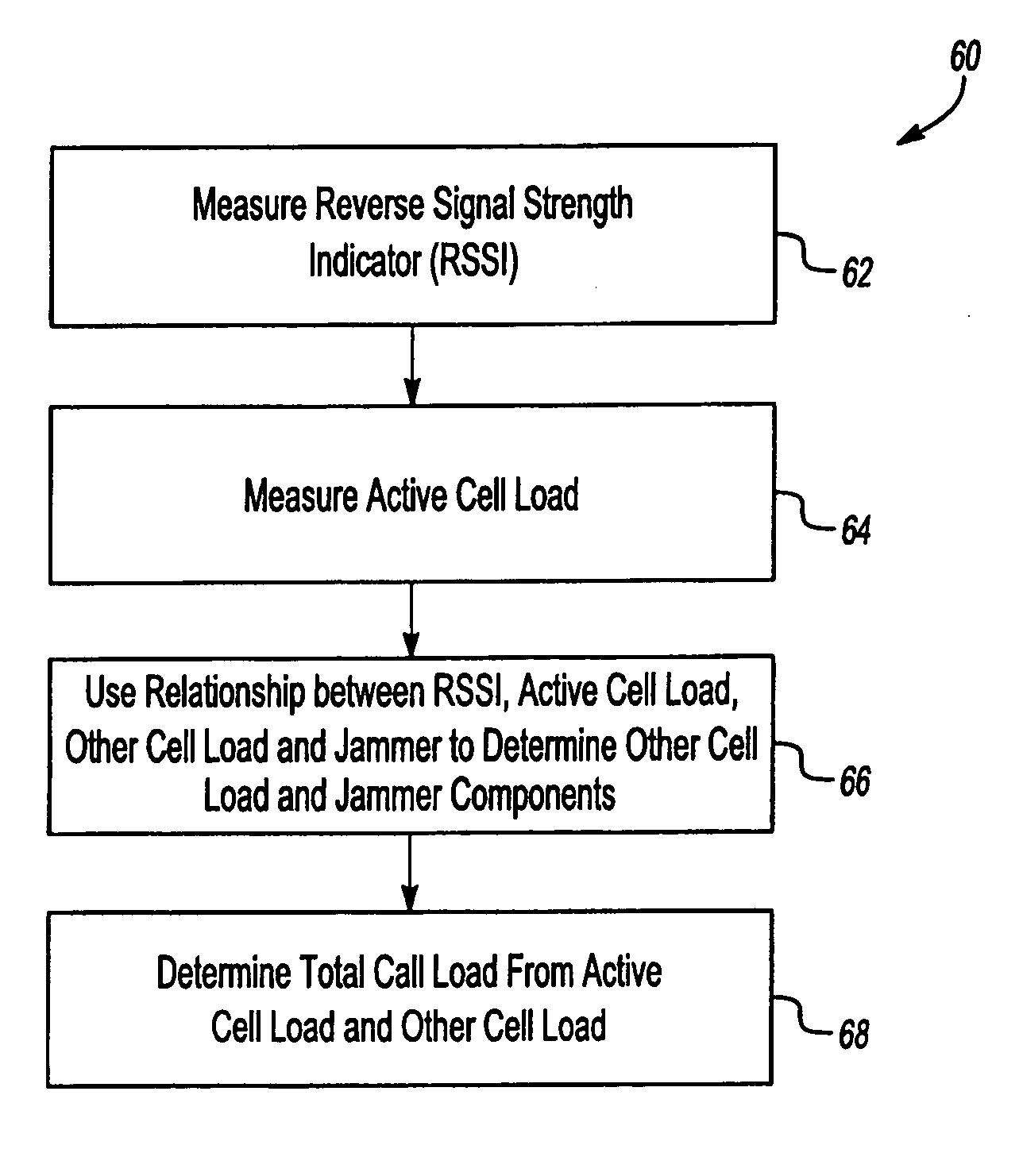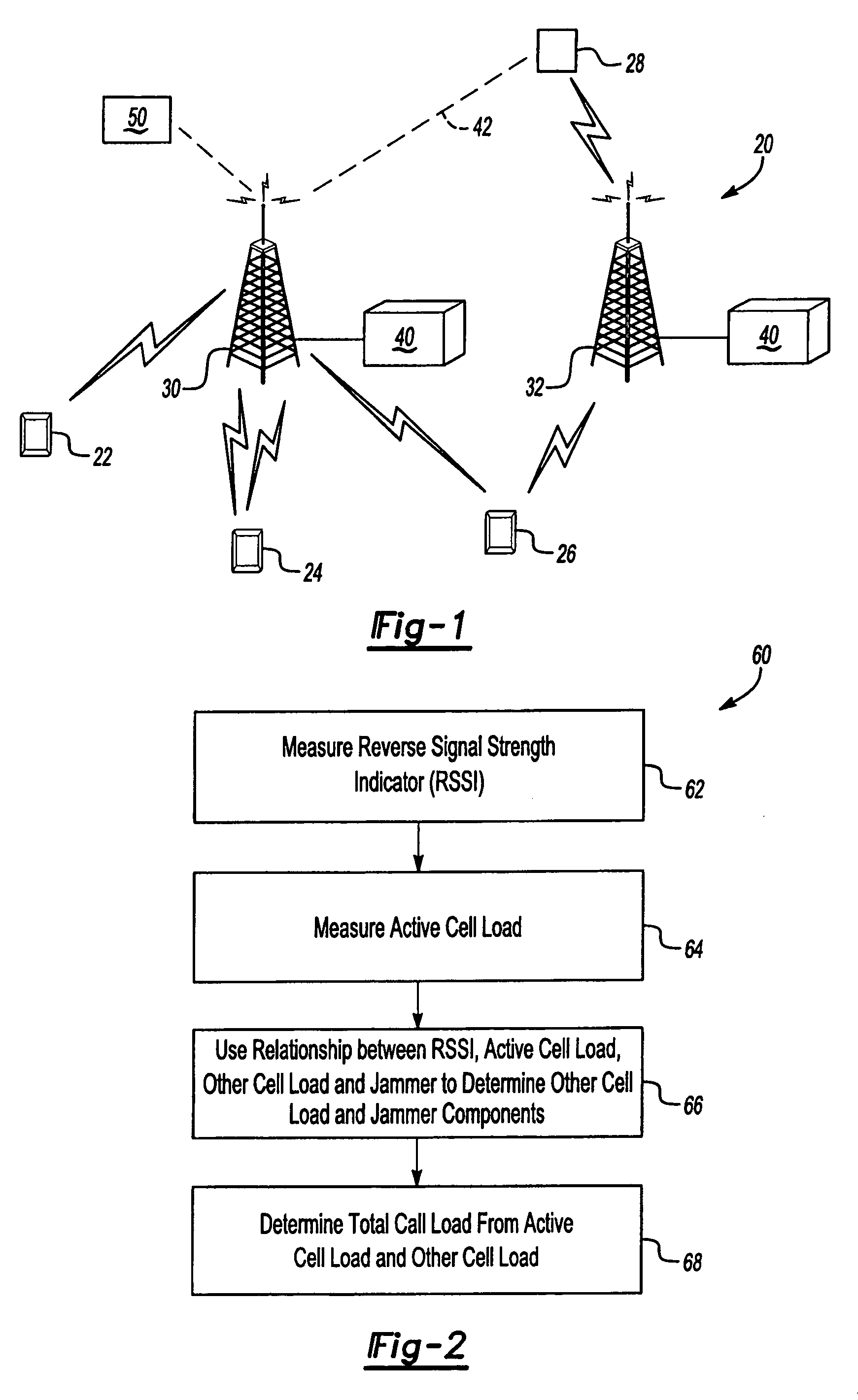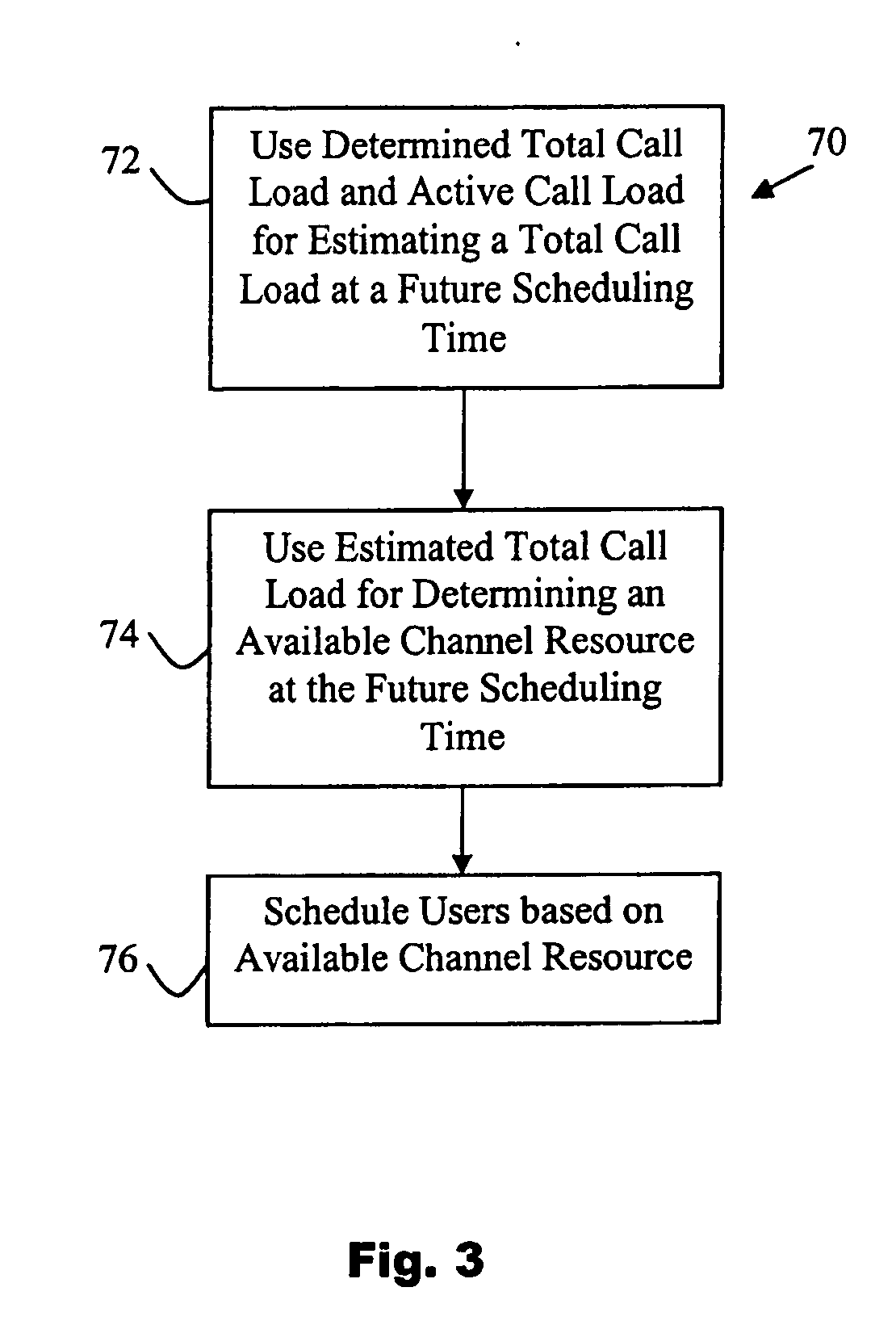Scheduling mobile users based on cell load
a mobile user and cell load technology, applied in the field of communication, can solve the problems of increasing the interference level measured at the base station, increasing the rate of data transmission, and mobiles that are transmitting near their maximum power suffer a degradation of service quality, and achieve the effect of better scheduling techniques
- Summary
- Abstract
- Description
- Claims
- Application Information
AI Technical Summary
Benefits of technology
Problems solved by technology
Method used
Image
Examples
Embodiment Construction
[0034] This invention provides an ability to accurately estimate or determine the total call load Xtotal at a high rate. Additionally, this invention provides an ability to estimate or determine the noise floor plus jammer (N0+J) contribution to reverse link interference. These two quantities can strategically be used as the input data for base station algorithms to manage the reverse link RF resources in the air interface. The determined total call load Xtotal and noise floor plus jammer (N0+J) metrics are useful for reverse link interference overload control, scheduling and rate control of data users (e.g. packet data), protecting reverse link coverage, detecting excessive cell interference from neighbor sectors, estimating thermal noise floor, and detecting and reporting external jammers in the carrier, for example. With this invention, more accurate load determination and scheduling is possible compared to previous systems that relied upon RSSI as the control metric.
[0035]FIG. ...
PUM
 Login to View More
Login to View More Abstract
Description
Claims
Application Information
 Login to View More
Login to View More - R&D
- Intellectual Property
- Life Sciences
- Materials
- Tech Scout
- Unparalleled Data Quality
- Higher Quality Content
- 60% Fewer Hallucinations
Browse by: Latest US Patents, China's latest patents, Technical Efficacy Thesaurus, Application Domain, Technology Topic, Popular Technical Reports.
© 2025 PatSnap. All rights reserved.Legal|Privacy policy|Modern Slavery Act Transparency Statement|Sitemap|About US| Contact US: help@patsnap.com



